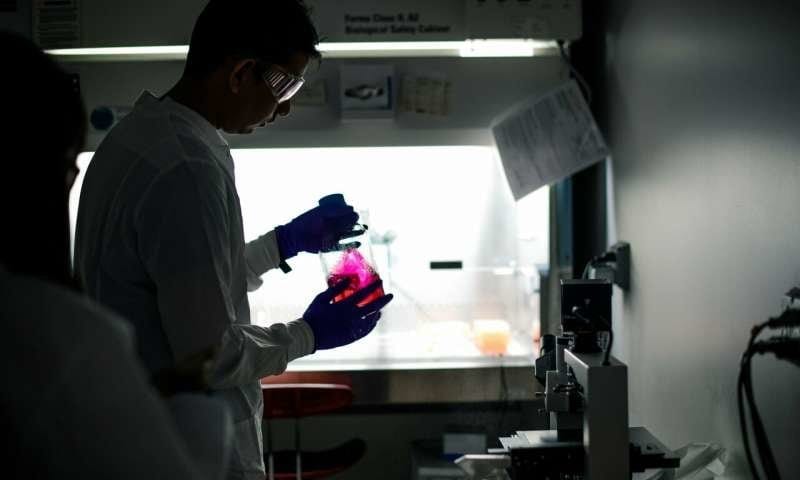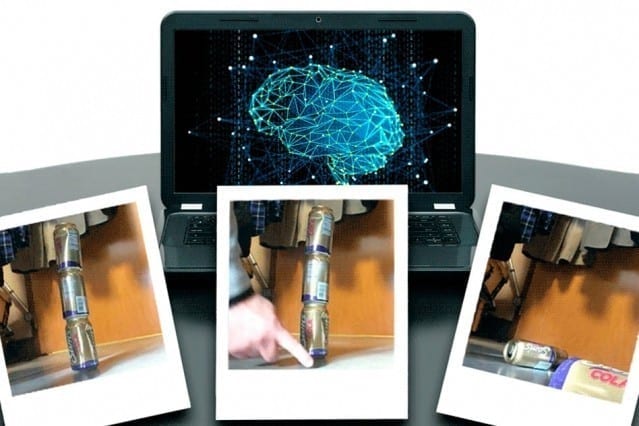
Living organisms expand and contract soft tissues to achieve complex, 3D movements and functions, but replicating those movements with man-made materials has proven challenging.
A University of Texas at Arlington researcher recently published groundbreaking research in Nature Communications that shows promise in finding a solution.
Kyungsuk Yum, an assistant professor in UTA’s Materials Science and Engineering Department, and his doctoral student, Amirali Nojoomi, have developed a process by which 2D hydrogels can be programmed to expand and shrink in a space- and time-controlled way that applies force to their surfaces, enabling the formation of complex 3D shapes and motions.
This process could potentially transform the way soft engineering systems or devices are designed and fabricated. Potential applications for the technology include bioinspired soft robotics, artificial muscles – which are soft materials that change their shapes or move in response to external signals as our muscles do – and programmable matter. The concept is also applicable to other programmable materials.
“We studied how biological organisms use continuously deformable soft tissues such as muscle to make shapes, change shape and move because we were interested in using this type of method to create dynamic 3D structures,” Yum said.
His approach uses temperature-responsive hydrogels with local degrees and rates of swelling and shrinking. Those properties allow Yum to spatially program how the hydrogels swell or shrink in response to temperature change using a digital light 4D printing method he developed that includes three dimensions plus time.
Using this method, Yum can print multiple 3D structures simultaneously in a one-step process. Then, he mathematically programs the structures’ shrinking and swelling to form 3D shapes, such as saddle shapes, wrinkles and cones, and their direction.
He also has developed design rules based on the concept of modularity to create even more complex structures, including bioinspired structures with programmed sequential motions. This makes the shapes dynamic so they can move through space. He also can control the speed at which the structures change shape and thus create complex, sequential motion, such as how a stingray swims in the ocean.
“Unlike traditional additive manufacturing, our digital light 4D printing method allows us to print multiple, custom-designed 3D structures simultaneously. Most importantly, our method is very fast, taking less than 60 seconds to print, and thus highly scalable.”
Yum’s paper, “Bioinspired 3D structures with programmable morphologies and motions,” was published in the Sept. 12 issue of Nature Communications.
The research is an example of data-driven discovery, one of the themes of UTA’s Strategic Plan 2020: Bold Solutions | Global Impact, said Stathis Meletis, chair of the Materials Science and Engineering Department.
“Dr. Yum’s approach to creating programmable 3D structures has the potential to open many new avenues in bioinspired robotics and tissue engineering. The speed with which his approach can be applied, as well as its scalability, makes it a unique tool for future research and applications,” Meletis said.
Learn more: UTA researcher creates hydrogels capable of complex movement
The Latest on: Programmable hydrogels
[google_news title=”” keyword=”programmable hydrogels” num_posts=”10″ blurb_length=”0″ show_thumb=”left”]
via Google News
The Latest on: Programmable hydrogels
- Low-Power Programmable LDOon April 28, 2024 at 5:00 pm
The eLDO018-I is a low-power programmable regulator that provides up-to 100mA of load current. The output voltage is programmable. The eLDO018-I employs a PMOS as its pass device allowing its low-drop ...
- The Best Corsair Gaming Miceon April 9, 2024 at 6:59 am
Customizability: Gaming mice with customizable DPI settings, programmable buttons, RGB lighting, and adjustable weight can suit several types of playstyles. Corsair's iCUE app allows changing ...
- Save $40 on this Smart Programmable Thermostat with Alexaon March 8, 2024 at 4:09 pm
So hurry while they are still available. The Amazon Smart Programmable Thermostat with Alexa, currently priced at $59.99, is designed as a smart upgrade from traditional thermostats, aiming to ...
- Programmable hydrogels could herald a new era in wound careon February 12, 2024 at 8:23 am
Hydrogels are engineered materials that absorb and retain water and are currently used in various medical treatments, including dressing wounds. The problem with current hydrogels is that they adhere ...
- Building A Receiver With The ProgRock2 Programmable Crystalon April 28, 2023 at 8:16 pm
[Q26] decided to use the ProgRock2 “programmable crystal” to build a receiver that could tune multiple frequencies without the usual traditional tuning circuitry. The ProgRock2 is designed ...
- An Affordable And Programmable PLCon December 7, 2022 at 5:45 pm
A programmable logic controller (PLC) is a computer designed to automate industrial machinery, and comes with protected interfaces and usually a specific PLC programming environment. Thus ...
- Crux 6-Qt. Programmable 14681 Slow Cookeron August 17, 2020 at 5:12 pm
High scores indicate more tender meat and vegetables at the end of 8 hours. The Crux 6-Qt. Programmable 14681 is part of the Slow Cookers test program at Consumer Reports. In our lab tests ...
- Programmable Logic Controllers (PLC) Informationon August 14, 2020 at 3:08 am
PLCs (programmable logic controllers) are the control hubs for a wide variety of automated systems and processes. They contain multiple inputs and outputs that use transistors and other circuitry to ...
- Complex Programmable Logic Devices (CPLD) Informationon February 8, 2018 at 12:45 pm
Complex programmable logic devices (CPLDs) are integrated circuits (ICs) or chips that application designers configure to implement digital hardware such as mobile phones. CPLDs can handle ...
via Bing News











